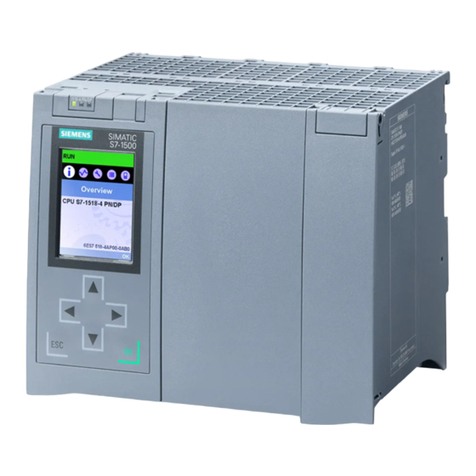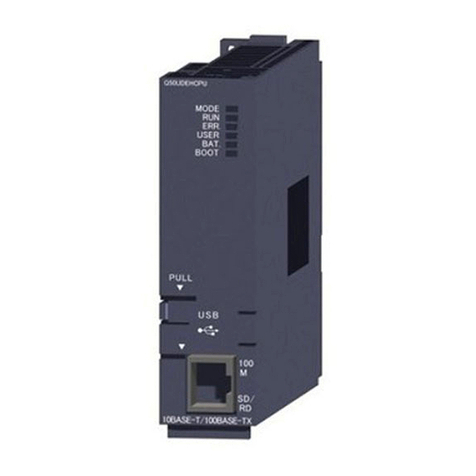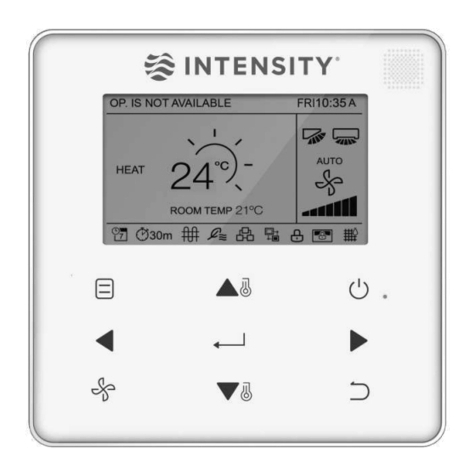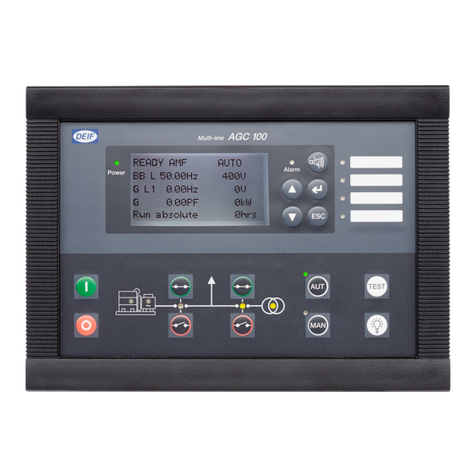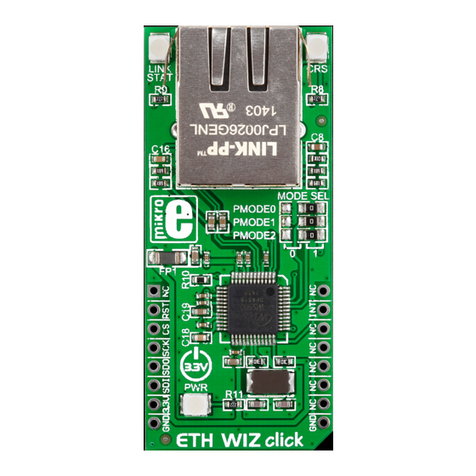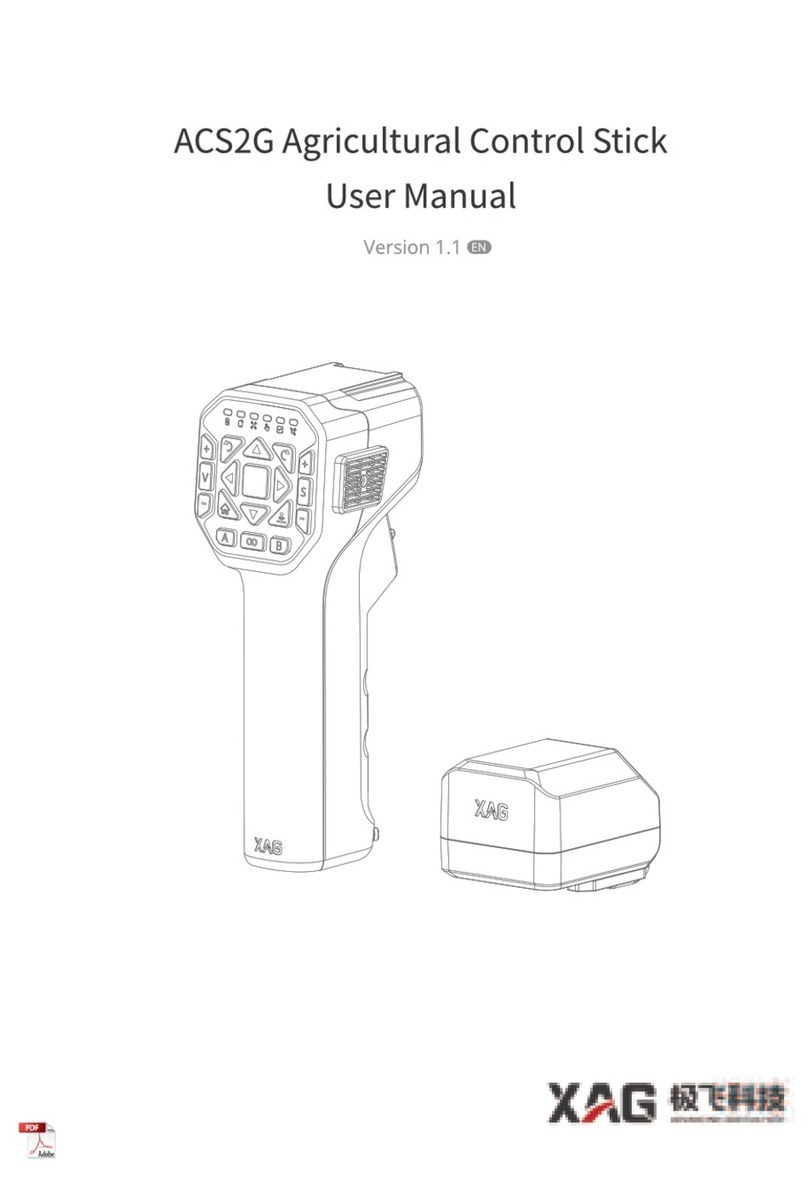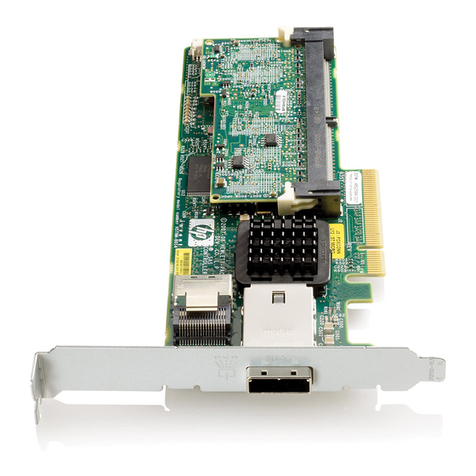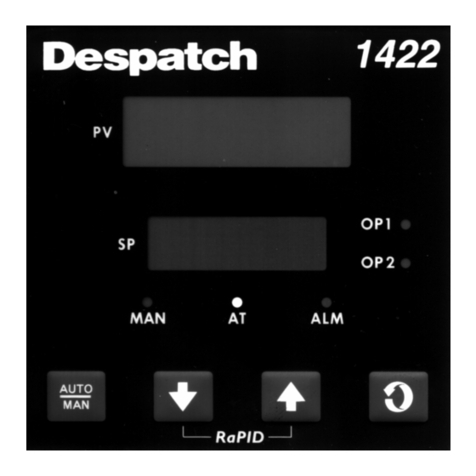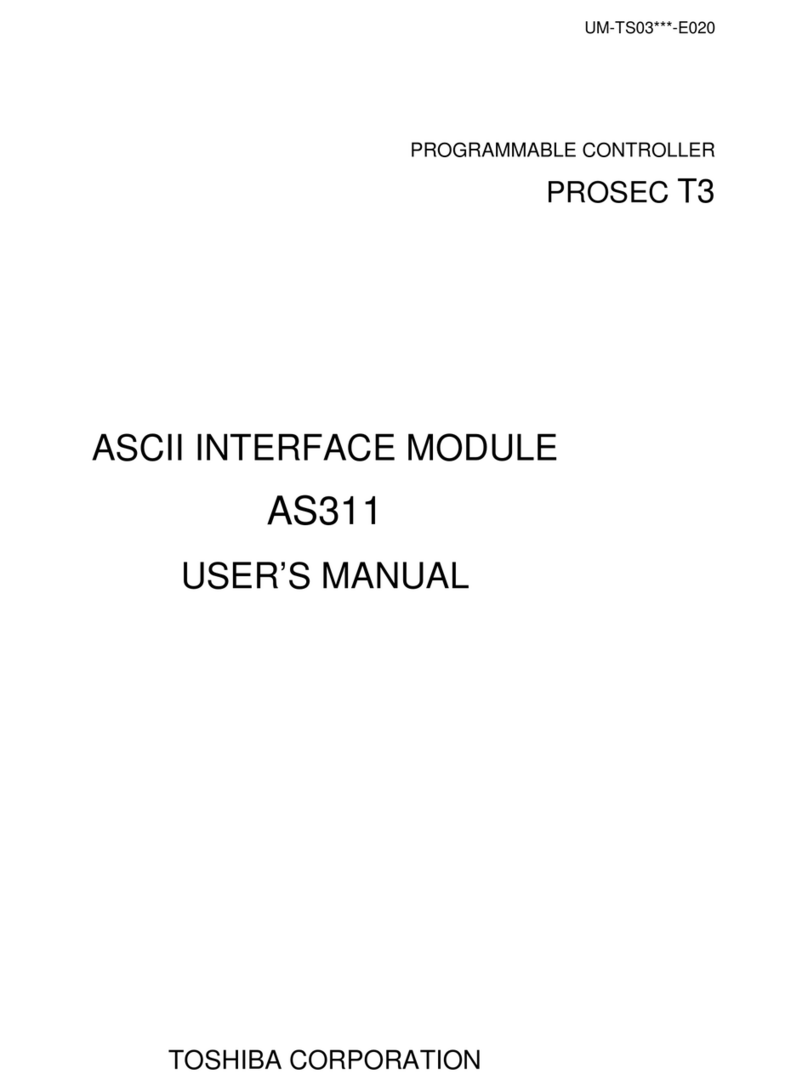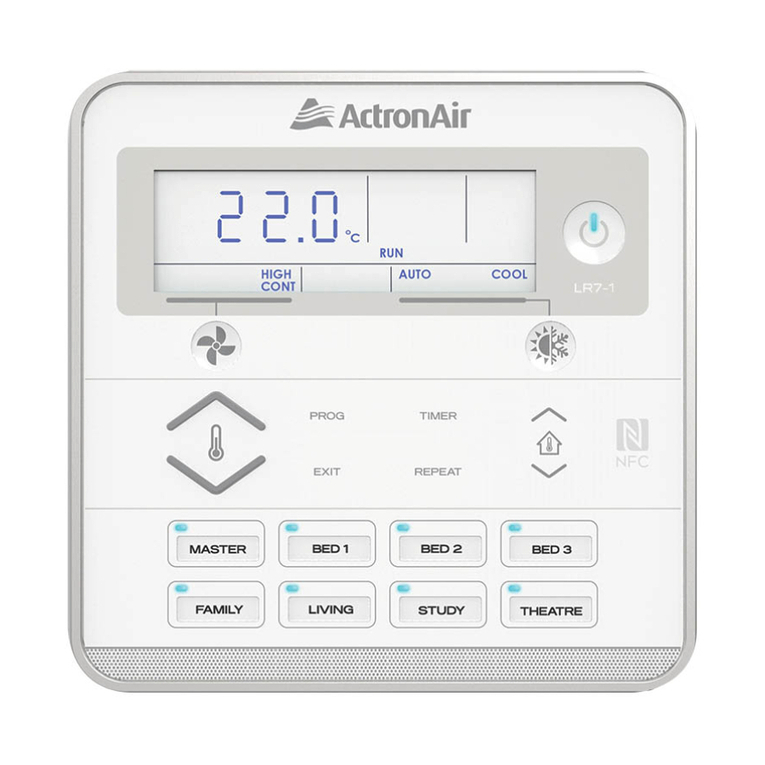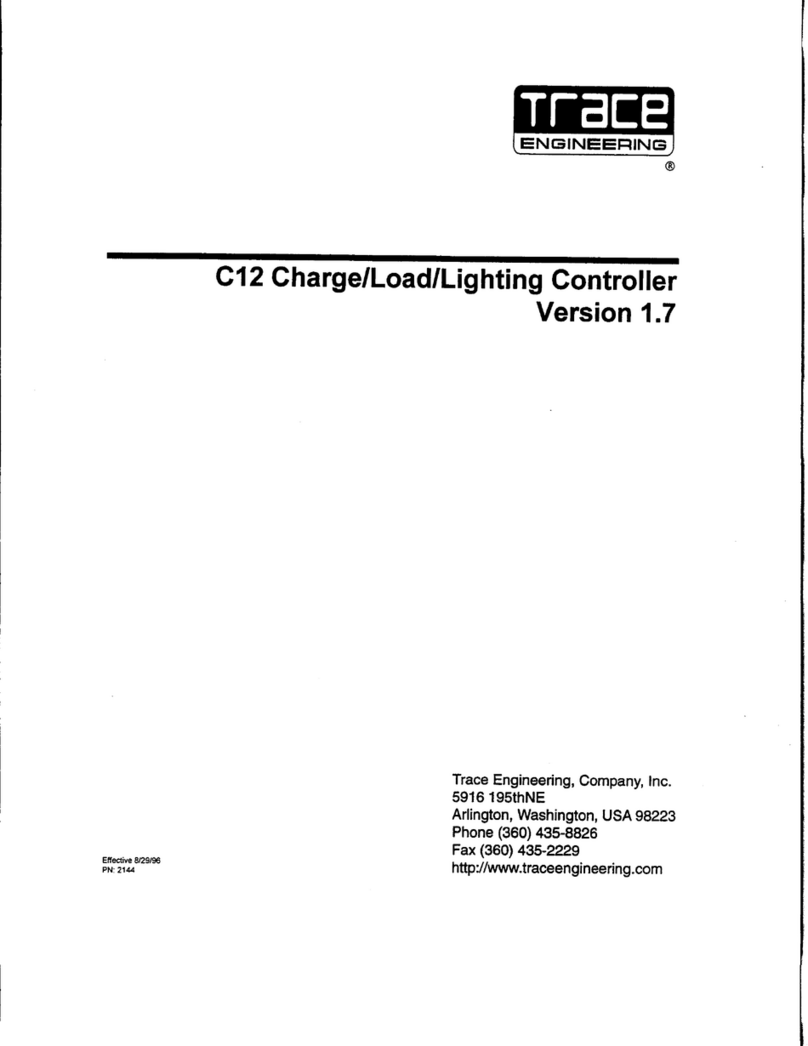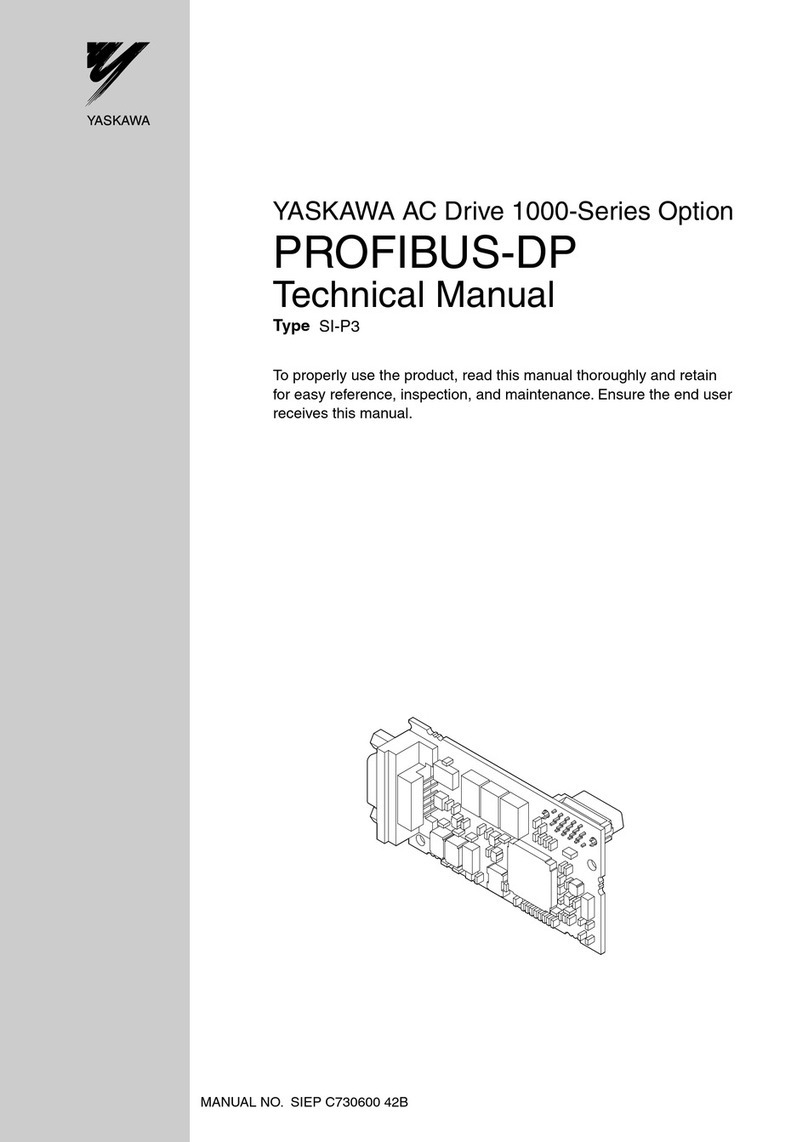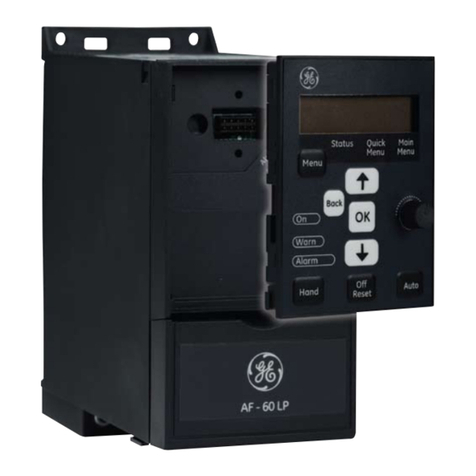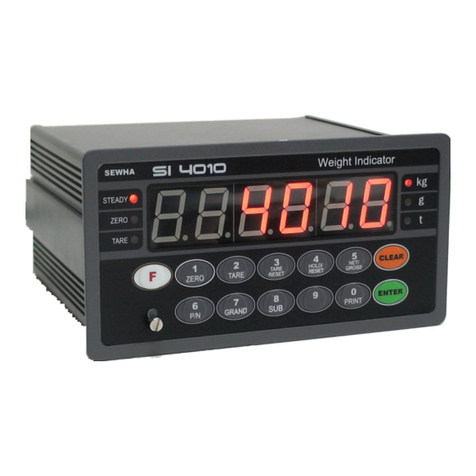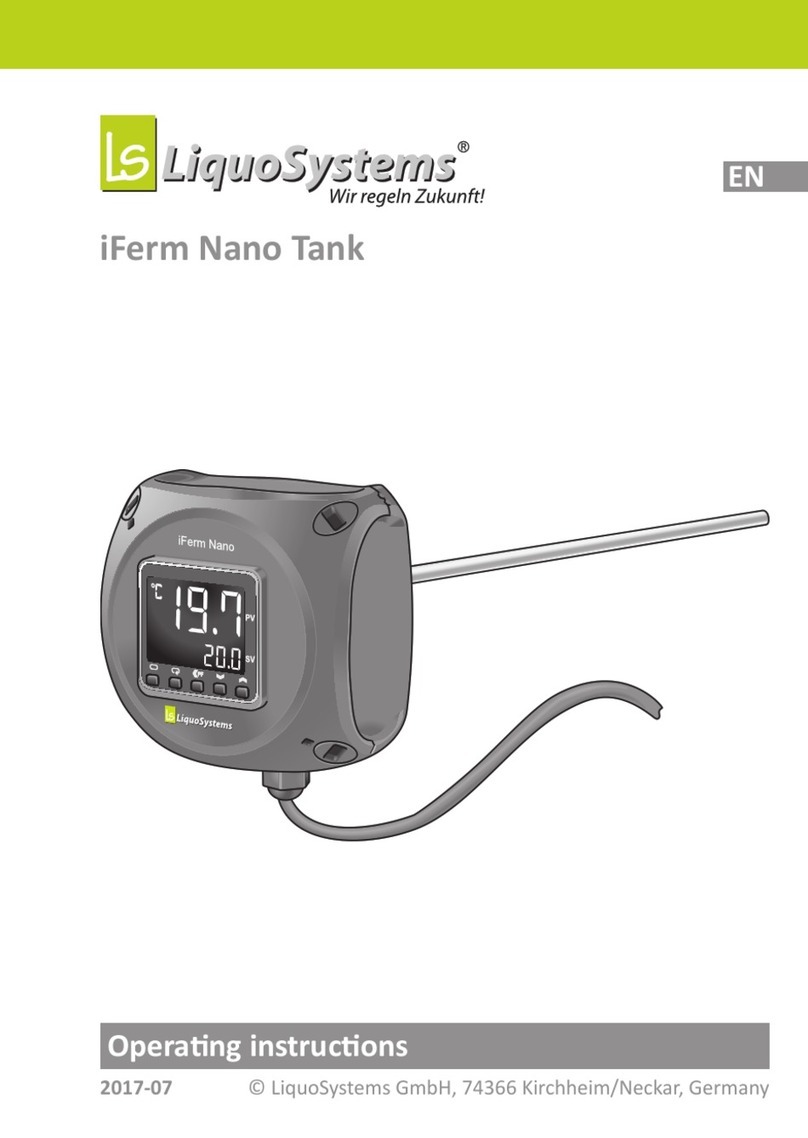VistaLab ali-Q 2 Series User manual

ali-Q™ 2 Series
Operating Manual

Table ofContents
Safety Instructions................................................................................................................................................. 3
Getting Started...................................................................................................................................................... 4
Component Diagram + Materials ........................................................................................................................................4
Package Contents ................................................................................................................................................................5
Terms and Definitions .........................................................................................................................................................5
Operation and Use ................................................................................................................................................ 6
Shipping Mode ....................................................................................................................................................................6
Sleep Mode..........................................................................................................................................................................6
Pipetting speed control .......................................................................................................................................................6
LED Indicators......................................................................................................................................................................6
Conventional Pipetting Mode ............................................................................................................................................ 7
Aliquot Mode.......................................................................................................................................................................8
Intelligent Measuring System..............................................................................................................................................9
Wall Mount..........................................................................................................................................................................9
Kickstand ……………………………………………………………………………………………………………………………………………………………………..9
Technical Specifications ....................................................................................................................................... 10
Calibration……………………………………………………………………………………………………………………………………………………………. 11
In-lab Calibration Protocol ............................................................................................................................................... 12
Initial Performance Verification Worksheet......................................................................................................................12
Troubleshooting .................................................................................................................................................. 14
Maintenance ....................................................................................................................................................... 15
Cleaning / Decontaminating............................................................................................................................................. 15
Autoclaving....................................................................................................................................................................... 15
Replacing Membrane Filter.............................................................................................................................................. 15
Replacing Nozzle Insert .................................................................................................................................................... 15
Recharging Battery ........................................................................................................................................................... 16
Replacing Battery ............................................................................................................................................................. 16
Warranty ............................................................................................................................................................ 17
Send-in Service ................................................................................................................................................................. 17
Ordering Information .......................................................................................................................................... 18
Transport, Storage and Disposal........................................................................................................................... 19
Declaration of Conformity ................................................................................................................................... 20
Calibration Mode .............................................................................................................................................................. 13
Reset to Factory Calibration............................................................................................................................................. 13

P a g e | 3
<- Back to T.O.C.
Safety Instructions
Read this operating manual completely before using the device for the first time. Also, observe the instructions for use ofthe accessories. This
instrument may sometimes be used with hazardous materials, operations, and equipment. Itisbeyond the scope of this manual toaddress all
the potential safety risks associated with its use insuch applications. Itis the responsibility ofthe user ofthis instrumenttoconsult and
establish appropriate safety and health practices and determine the applicability ofregulatory limitations prior touse.
ali-Q 2 is an aliquoting pipet controller designed for aspirating and dispensing aqueous solutions with plastic orglass serological pipets in 1 to
100 mLvolumes. Itis intended for laboratory use. Any use ofthis instrument ina medical orIVD setting is the sole responsibility ofthe user.
! Read the following carefully!
1. Every user must read and understand this operating manual before operation.
2. Follow general instructions for hazard prevention and safety instructions; e.g., wear protective clothing, eye protection and gloves.
3. Observe all specifications provided by reagent manufacturers.
4. Never use the instrument in an atmosphere with a danger of explosion. Highly flammable liquids must not be pipetted.
5. Only use the instrument for pipetting liquids, with strict regard to the defined limitations of use. If in doubt, contact VistaLab.
6. Always use the instrument in such a way that neither the user nor any other person is endangered. Avoid splashes. Only use suitable
vessels.
7. Never use force on the instrument.
8. Use only VistaLab accessories and spare parts. See Ordering Information on pg 18. Do not attempt to make any technical alterations. Do not
dismantle the instrument any further than is described in the operatingmanual!
9. Always check the instrument for visible damage before use. If there is a sign of a potential malfunction, immediately stop pipetting. Consult
the 'Troubleshooting' section of this manual or contact VistaLab if needed.
10. Only the original Power supply can be used for recharging of the Lithium Ion battery. Do not replace with non-rechargeable batteries or
rechargeable batteries of other manufacturers.
11. The Power supply must be protected against moisture and must be used only for this instrument.
12. Only authorized service personnel may service the instrument. Unauthorized repair or service may void the units’ warranty
13. DO NOT AUTOCLAVE ali-Q. Only approved parts and accessories may be removed from unit for autoclaving. See pg. 15, Cleaning /
Decontaminating.
14. WARNING! Improper use of the instrument or the battery (short-circuit, mechanical damage, overheating etc.) may cause the explosion of
the battery.
Operating Conditions:
o
Operating Temp: 15°C to 40°C (59°F to 104°F)
o
Storage Temp: -20°C to + 50°C (-4°F to +122°F)
o
Altitude up to 2000 m
o
Relative Humidity: 10% – 95%, non-condensing
o
Atmospheric Pressure: 70 – 106 kPa (525 – 795 mmHg)
o
Vapor Pressure up to max. 500 mbar. Aspirate slowly above 300 mbar, to prevent liquid boiling
ali-Q 2 Body Chemical Compatibility for cleaning and decontaminating:
Water, diluted ethanol or isopropanol. For more information on chemical compatibility, see the support area of our website,
www.vistalab.com/support
Safety Compliance:
See Declaration of Conformity at end of manual
EN 61010-1 General Safety Requirements CSA C22.2, No. 61010.1
EN 61326 EMC Requirements UL 31111-1

P a g e | 4
<- Back to T.O.C.
Getting Started
Materials Chart
Description
Material
1
Body/ Main Housing
PC/ABS
2
Aliquot volume dial
Nylon
3
Charging port, USB-C
N/A
4
Aliquot button
Nylon
5
Aspirate button
Nylon
6
Dispense button
Nylon
7
Battery, Lithium ion
Lithium Polymer
8
Battery compartment cover
PC/ABS
9
Nozzle Cover
Nylon
10
Nozzle Insert
Silicone
11
Membrane Filter, 0.22 µm
PTFE
12
LED Indicator
Polycarbonate
13
Kickstand
PC/ABS
14
Speed Dial (VS Models Only)
PC/ABS
14
13

P a g e | 5
<- Back to T.O.C.
Package Contents:
ali-Q 2 pipet controller (Original, LS, or VS)
Power supply (with universal outlet adapters)
USB-C charging cord
Kickstand
Wobble-notTM serological pipet samples (1 per size: 5mL, 10 mL, 25 mL, 50 mL, Shorty 10 mL, Shorty 25 mL)
1 Wall Mount
1 Replacement membrane filter (.22 µm)
Quick Reference Guide
Safety Sheet
Certificate of Calibration
Terms and Definitions:
Aliquot – (noun) An equal fractional part of a total amount of a solution or suspension; (verb) To divide (as a
solution) into equal parts.
Aspirate – (verb) to draw by suction
Dispense – (verb) to expel liquid
Serological Pipet (pipet) – (noun) disposable glass or plastic tube with volume graduations used to aspirate and
dispense liquid. Sometimes spelled ‘pipette’.
Accuracy – How close the measured volume is to the target volume
Precision (Coefficient of Variation (CV)) – How close measurements (aliquots) are close to each other in volume;
independent of target volume
Performance – Another way of referring to the unit’s accuracy and precision (repeatability/reproducibility)

P a g e | 6
Operation and Use
Shipping Mode:
ali-QTM 2is shipped fromthe factory in Shipping mode for safety andtopreserve battery life.When you firsttake
your ali-Q2 out ofthe box, you must wake it out of shipping mode by pressing the purple aliquot button with the
unit inthe upright position.
To put the ali-Q2 back into Shipping mode, set the volume dial above 5 mL, turn the unit completely upside down
and press and hold the purple aliquot button for at least 5seconds. You will then hear 3 “power down”
tones. Shipping mode should only beused when shipping or transporting ali-Q 2 for extended periods oftime.
Sleep Mode:
ali-Q 2 automatically goes into Sleep mode to preserve battery lifeafter being motionless for 3minutes.The status
LED (see below) will turn off when the unit isinsleep mode. Once the ali-Q 2 is picked upor moved, it will
automatically wake itself up, andstatus LED will be Magenta again.
Pipetting speed control:
In Conventional Pipetting Mode (see next page), thespeed that the ali-Q 2 aspirates and dispenses liquid is
controlled bythe touch-sensitive aspirate and dispense buttons. The amount of force used topush on the buttons
determines the speed that the liquid enters orexits the pipet.
↑ BUTTON FORCE = ↑ SPEED
LED Indicators:
All ali-Q 2models feature two LEDs atthetop ofthe unit. The two
LEDs will be referred to asthe Status LED and the Battery LED. The
chart below outlines the possible LED combinations, and explains the
meaning of each. If both ali-Q 2status LEDs are off, see the Sleep
Mode or Shipping Mode above.
NOTE: The functions ofthese LEDs will change when the unitisin
calibration mode. See the Calibration section for further information
on this procedure.
NOTE: ali-Q 2 can still be used when connected to charger. If LED does not light up during charging, see
Troubleshooting section.
<- Back toT.O.C.
Unit Plugged In
Unit on Battery Power
Battery
LED
Solid Red – Charging
Green – Fully Charged
Off – Battery Normal
Slow Red Blink – Battery Low
Fast Red Blink – Battery Critical
Status
LED
Magenta – Ready
Off – Unit Busy/Asleep
Fast Red Blink – Error
Magenta – Ready
Off – Unit Busy/Asleep
Fast Red Blink – Error

<- Back toT.O.C.
P a g e | 7
Conventional Pipetting Mode:
1Attach serological pipet - Hold the pipet as near to its upper end as possible, and carefully insert it into the nozzle
until it fits tightly. NOTE: ali-Q 2 is compatible with all brands and sizes of pipets!
WARNING!
Using excessive force when inserting pipets risks breakage and injury. If you are having difficulty inserting pipets fully,
try using VistaLab Wobble-notTM low insertion force pipets.
2Aspirate liquid - Immerse the pipet’s tip into the liquid. Press and hold the gray aspirate button and fill the pipet so
that the meniscus is above the volume graduation desired. Then press the bottom gray dispense button until bottom
of meniscus is at the desired volume graduation.
ATTENTION!
Do not fill the serological pipet over the max volume! Severe
damage can occur if any liquid enters ali-Q 2! Decrease pressure
on aspirate button when reaching max volume to slow down
aspiration.
3Dispense liquid - Carefully position the tip of the full pipet over the receiving vessel. Press and hold the gray
dispense button until meniscus reaches desired volume graduation or when pipet is completely empty.
ATTENTION!
NEVER invert ali-Q 2 or lay it on a bench when filled with liquid.
NOTE:
The motor will activate at seemingly random times when pressing the aspirate or dispense buttons.
Don’t worry. It’s normal!
For more information on ali-Q 2’s Intelligent Measuring System, see pg. 9.
Aspirate button
Aspirate
Dispense
Dispense button

<- Back toT.O.C.
P a g e | 8
Aliquot Mode:
1Attach serological pipet.
2Set the desired aliquot volume on purple volume dial (left picture) - Turn the dial sothat the arrow
points tothe volume you wish toaliquot.
3Set the aliquot speed on the purple aliquot speed dial (VS models only; right picture) – Turn the dial so that
the arrow points tothe desired speed. 1 isthe slowest and 7 isthe fastest. 1dispenses with the lowest force
and 7 dispenses with the highest force.
4Aspirate enough liquid todispense as many aliquots asyou will need.
Ex:If you need to dispense 10 aliquots of 2mL, you will need toaspirate at least 20mLof liquid.
5Aliquot - Carefully position the tip of the full pipet over the firstreceiving vessel. Press andHOLD the purple
aliquot button until the status LED blinks GREEN. You will feel and hear the motor turn onbriefly.Then,
carefully transfer to the next vessel and repeat for each aliquot.
NOTE:Discard first aliquot for optimal precision.
NOTE:Ifyou release the aliquot button too soon, i.e. before the full aliquot volume has dispensed, you will hear
an “alert” sound and the status LED will blink RED.The aliquot did not dispense fully/properly andwill not be
accurate. Re-do the aliquot.
Aliquot button
Aliquot

P a g e | 9
<- Back to T.O.C.
Intelligent Measuring System:
ali-Q 2’s aliquot mode utilizes a state-of-the art measuring system that incorporates information and feedback from
multiple sensors to give real-time feedback and parameter adjustment for different variables that affect the accuracy
and precision when in aliquot mode.
-Varying environmental conditions: Temperature, humidity and pressure all have significant effects on the
performance of any liquid handling device…. EXCEPT for the ali-Q 2! ali-Q 2 can sense changes in ambient conditions
and compensate as necessary to ensure accurate aliquoting whether you're in the deserts of Arizona, or the
mountains of Colorado!
-Varying pipet angle: One of the most useful (and ergonomic!) features of the ali-Q 2 is its ability to adjust the
dispensed aliquots for varying pipet angles. This is especially useful in a hood, where space and maneuverability are
limited. Whether you hold the pipette completely vertical or tilted, you can be confident that accuracy and
repeatability of the aliquots will not be affected.
-Varying brands/sizes serological pipets: Every brand of pipet has different sizes and geometries. These geometric
differences contribute to changes in the physical characteristics of the system. ali-Q 2 can sense the effect of these
differences and will automatically compensate accordingly to optimize performance.
Wall Mount:
ali-Q 2 may be stored in the wall mount (included in box) to avoid damage from accidental drops and chemical spills
(and save precious bench space!). ali-Q 2 may also be placed in the wall mount with pipets up to 100 mL inserted. The
wall mount will firmly adhere to any smooth, clean, non-painted surface, such as the inside of a hood, using the 3M
Command strips included. Clean the surface with alcohol before applying the wall mount. Remove the stickers on the
adhesive backs and immediately press onto surface and keep applying moderate pressure for about 30 seconds. DO
NOT place ali-Q 2 into the wall mount for about 30 minutes to allow the adhesive to set.
Kickstand:
ali-Q 2 can be used with the removable kickstand (included in box) even with a serological pipet inserted. The
kickstand attaches securely in one orientation only. Be sure to attach so that the curved ends point up. Simply snap
the pins on the kickstand into the round dimples on the sides of the ali-Q 2 body. To remove, gently pinch the curved
ends and pull kickstand away from body.
Kickstand

P a g e | 10
<- Back to T.O.C.
Technical Specifications
Conventional pipetting mode:
Accuracy and precision (CV) is determined by the graduations on the serological pipet used (typically ±2%, see
manufacturer’s spec) as well as the user’s ability to consistently eyeball and control the liquid meniscus.
Aliquot mode:
ali-Q 2 is calibrated to perform within the following performance specifications, under controlled environmental
conditions with Grade 3 purified water:
ali-Q 2 and ali-Q 2 VS (speed 7): 0.5-5mL
With Wobble-notTM serological pipet (any size):
Volume
Accuracy
Precision (CV)
5.0 mL
±2%
±1%
0.5 mL
±2%
±2%
With any other brand of serological pipet (any size):
ali-Q 2 LS (Low Speed): 0.3-3mL
With Wobble-notTM serological pipet (any size):
Volume
Accuracy
Precision (CV)
3.0 mL
±2%
±1%
0.3 mL
±3%
±3%
With any other brand of serological pipet (any size):
Dimensions: 7.2’’ x 7.0’’ x 2.2’’ (18.3 cm x 17.8 cm x 5.6 cm)
Weight: 350g
Volume Capacity: Accepts 1 to 100 mL serological pipets
Pipet Compatibility: Compatible with ANY size and ANY brand serological pipet. Optimal performance when using
VistaLab Wobble-not serological pipets. Not for use with Pasteur pipets.
Mains/ power supply:
Input Voltage = 100-240 VAC
Frequency = 50-60 Hz
Input Current = 190-320 mA Output Voltage = 5V
Output Current = 2 A
Rechargeable Battery:
Type = Lithium-Polymer Voltage = 3.7V
Capacity = 1000 mAh Charging Time = ~ 3 hr
Number of Dispenses = ~2000 dispenses (with a 25mL pipet)
Ambient Conditions:
Ambience = For indoor use only Ambient Temperature = 15 - 40°C
Relative Humidity = 10% - 95%, non-condensing
Atmospheric pressure = 70 – 106 kPa (525 - 795 mmHg)
Volume
Accuracy
Precision (CV)
5.0 mL
±3%
±2%
0.5 mL
±4%
±3%
Volume
Accuracy
Precision (CV)
3.0 mL
±4%
±3%
0.3 mL
±5%
±4%

P a g e | 11
<- Back to T.O.C.
Calibration
ali-Q 2’s aliquot mode volume delivery is factory calibrated toaliquot the volume set on the aliquot volume dial to the
factory specs, as listed onTechnical Specifications section, in a state-of-the-art ISO 17025 accredited calibration lab
under the following conditions:
-Temperature: 20°C - 22°C (68°F - 71.6°F)
-Relative humidity: 45% - 75%
- Using Wobble-not serological pipet
-Using ISO 3696 Grade3 purified water
NOTE: Using ali-Q 2 with different liquids more/less dense than water may slightly affect the accuracy of the
dispensed aliquots. However, precision is always maintained with the ali-Q 2thanks to itsIntelligent Measuring
System. To adjust the accuracy of your unit, see page 12.
Calibration Verification:
VistaLab recommends sending ali-Q 2toVistaLab forcalibration, or performing verification, at least once a year or
whenever conditions and equipment change.
In-lab Verification / Adjustment:
Users can verify the accuracy of the dispensed aliquots in four ways:
1Gravimetric - Use a digital scale andwater, determine the weight (in grams) ofthe dispensed aliquot. See the
Performance Verification document for gravimetric procedure at www.vistalab.com/support
2Colorimetric - Use a spectrophotometer to measure the absorbance value of diluted dye in a solvent of controlled
volume. Absorbance value is then converted into a volume (µL).
3Visual- Use an approved graduated cylinder (Class A, To Contain, calibration certified).
4Visual (least reliable*) - Use the volume graduations on the serological pipet as a reference of how much liquid is
being dispensed.
*Serological pipets in general have ±2% accuracy (at full scale) of their volume graduations, so this is the least accurate
way ofverifying.

P a g e | 12
<- Back to T.O.C.
ali-Q 2In-labCalibration Protocol
The ali-Q 2 series pipet controllers include calibration software which allows users toperform in-lab calibration
adjustments as needed.
Perform Initial Performance Verification:
In order to calibrate the ali-Q 2,gravimetric measurements from the unit will first need to be obtained. Follow the
instructions fora Performance Verification below to determine the initial/current % error at 0.5 and5.0 mL and record
the 2 numbers touse in the following calibration procedure.
Worksheet
Determine the current accuracy of your ali-Q 2bytaking the average of 4gravimetric measurements at0.5 mL and 5.0
mL (or 0.3 and3.0 mL forthe ali-Q 2LS).
NOTE:We recommend using speed 7 for taking measurements with the ali-Q 2VS.
Use this table to record the values. Then calculate the avg. at each volume.
___________ Measurements (grams) ___________
1
2
3
4
avg. % error
high or
low
0.5 mL
5.0 mL
Then calculate the % error
at 0.5 mL:
at 5.0 mL:
Use the % error numbersfor Steps 2 and 3 on the next page.

P a g e | 13
<- Back to T.O.C.
Calibration Mode:
In Calibration Mode, the user enters the % errors calculated in the initial Verification Procedure. Once these values are
entered, the unit will calibrate automatically.
NOTE: The upper LED indicates the current calibration status. Solid blue
indicates factory calibration, while solid white indicates user calibration
values have been stored.
Step 1 - Enter Calibration Mode
1Set the volume dial to BELOW 0.0 mL.
2Hold the ali-Q 2 upside down.
3Press and hold the aliquot button for 5 seconds. Three tones will sound to indicate entry into calibration mode and
the lower LED will be quickly blinking blue.
4Release the button and return the unit to upright orientation.
5Watch for the lower LED to blink blue before proceeding.
NOTE: Calibration mode can be exited, without saving changes, during step 2 or step 3 by quickly pressing and
releasing the aliquot button. This will be followed by 5 red LED flashes to confirm exit.
Step 2 - Enter the % error at 0.5 mL
After entering calibration mode, the lower LED will be quickly blinking blue. This indicates that the unit is ready to
accept the calculated error at 0.5 mL.
1Enter the 0.5 mL % error value, from the previously performed Verification Procedure by setting it on the volume
dial. For example, if the mean error is 1.5%, set the volume dial to 1.5.
2If the ali-Q 2 is dispensing too high (+1.5% error), press the Aspirate button to
save the changes. If the ali-Q 2 is dispensing too low (-1.5% error), press the
Dispense button to save the changes. The 2 LEDs will alternate blue 5 times,
accompanied by a tone, to confirm entry.
3Wait until the lower LED is blinking blue before proceeding.
Step 3 - Enter the % error at 5 mL
The lower LED will now be slowly blinking blue, indicating that the unit is ready to accept the calculated error at 5
mL. Repeat the process outlined in Step 2 with the previously obtained 5 mL % error value. The 2 LEDs will alternate
blue 5 times, accompanied by a tone, to confirm entry.
(Note: If the LEDs blink YELLOW, the calibration values are out of bounds (+/-10%) and the values will not be stored.
Call our Technical Application Specialist at 914-244-4068 for assistance.)
If the LEDs blink GREEN, the unit has been successfully calibrated. The unit will now return to normal operation.
A post-calibration Verification should always be performed to confirm the changes were successful and the ali-Q 2
accuracy should now be within spec.
Reset to Factory Calibration:
The ali-Q 2 has been calibrated from the factory to ± %2 at 0.5 mL and 5 mL. The user can easily revert to the factory
calibration at any time. To reset the unit:
1Enter calibration mode using Step 1 in the Calibration Mode section.
2Turn the ali-Q 2 upright.
3Press and hold the aliquoting button for about 5 seconds, until the LEDs begin to blink green.
4Release the button. The LED will blink green 5 times to confirm the factory reset has been applied.

P a g e | 14
Troubleshooting
If problem still occurs, contact VistaLab Technical Support at (914) 244- 4068 or techservice@vistalab.com
<- Back toT.O.C
Problem
Possible Cause
Suggested Fix
Slow aspiration
-
Membrane filter clogged
-
Not enough force on aspirate button
-
Replace membrane filter
-
Press aspirate button with more force
to increase aspirate speed
Aspirating air bubbles
-
Pipet tip not fully immersed inliquid while
aspirating
-
Pipet not fully inserted into nozzle insert
-
Aspirating too fast for solution
(ex: detergents)
-
Make sure pipet tip is fully immersed in
liquid throughout aspiration
-
Insert pipet more
-
Lightly press the aspirate button to slow
aspirate speed
Pipette drips liquid
-
Pipet notfully inserted into nozzle insert
-
Crack inserological pipet
-
Membrane filter notproperly
positioned or upside down
-
Nozzle insert worn or damaged
-
Valve notshutting properly
-
Try Wobble-not low insertion force,
less drip serological pipets
-
Get a new pipet
-
Insert filter properly (see pg. 4)
-
Replace nozzle insert
-
Send ali-Q 2 in forrepair service
Pipet does not stay in ali-Q 2
-Nozzle insert worn or damaged
-Replace nozzle insert
NOTE: Using Wobble-not pipets will
significantly decrease damage to the
nozzle insert.
Out-of-Calibration
-
Using different equipment or different
density liquid, varying environmental
conditions
-
Membrane filter clogged
-
See In-lab Calibration on page 12
-
Replace membrane filter
ali-Q 2 makes “error” sound
when dispensing aliquots
-Not holding down aliquot button long
enough
- HOLD aliquot button until status LED
blinks GREEN andmotor starts (you
will hear and feel motor)
LED blinks or does not light up
when connected to charger
-
Battery not properly installed
-
Wrong Power supply
-
Battery / Power supply damaged
-
Firmly push in battery connector
-
Only use Power supply Cat. #9020-9005
-
Replace battery/ replace Power supply
Battery does not hold charge
-
Charger not inserted fully
-
Battery defective or drained
-
Check charger connection. Replace
charging cord
-
Replace battery
ali-Q 2 is unresponsive
-
Dead battery
-
Recharge battery
-
Restart unit by unplugging battery for 10
seconds and plug battery back in.

P a g e | 15
Maintenance
www.vistalab.com/services
Routine Maintenance: ali-Q 2 will require minimal, if any, maintenance, if used as intended. VistaLab recommends
performing routine maintenance and calibration verification at least once a year. Routine maintenance includes:
Cleaning and disinfecting outer body, nozzle cover, nozzle insert and filter
Replacing the membrane filter
Replacing nozzle insert (as-needed)
Aliquot mode calibration verification
Cleaning / Decontaminating:
- Chemical - Occasionally wipe outer housing of the ali-Q 2 and the nozzle cover with a damp
cloth of soapy water or diluted alcohol solutions (e.g. 70% isopropanol).
WARNING!
ALWAYS use protective gloves and eye protection. Avoid therisk of contamination!
- UV Sanitizing- The complete ali-Q 2 unit (outer housing) can withstand typical output (254 nm
wavelength) from UVsterilization lamps.
NOTE: The effects of theUVexposure will likely cause discoloration over time.
Autoclaving:
NEVER AUTOCLAVE ALI-Q 2!! Only the nozzle cover, nozzle insert and membrane filter can be
detached from the unit and separately autoclaved at:
•121°C (250°F); 30 psi (2 bar absolute) with a holding time of at least 15 minutes.
Replacing the Membrane Filter:
1Unscrew the purple nozzle cover.
2Remove the membrane filter.
3Place new membrane filter with the thicker end facing downwards into the silicone nozzle
insert and thinner end into ali-Q 2.
4Screw the nozzle cover assembly back onto the ali-Q 2.
Replacing the Nozzle Insert:
1Unscrew the purple nozzle cover.
2Remove the membrane filter and silicone nozzle insert fromnozzle cover.
3Insert new silicone nozzle insert into nozzle cover. Place membrane filter with the thicker end
insertedinto the silicone nozzle insert and thinner end into ali-Q 2.
4Screw the nozzle cover assembly back into theali-Q 2.
<- Back toT.O.C.

<- Back toT.O.C.
P a g e | 16
Recharging Battery Instructions:
Only use VistaLab Lithium ion battery (Cat # 9020-4001). The battery must not be replaced by non-rechargeable
rechargeable batteries from other manufacturers.
WARNING: Use of other manufacturer’s batteries or improper use of the instrument (e.g., short circuit, mechanical
damage, overheating, etc.) may cause the battery to explode.
Charge time = approx. 3 hours (from 0% to 100% battery)
Battery life = approx. 40 hours (dependent on frequency and intensity of use)
Conditions for recharging = 0°C to 40°C (32°F to 104°F), 20% to 80% relative humidity
Recharging Procedure:
1Attach the proper outlet adapter to the power supply pack and insert into wall outlet.
2Attach the wide end of the USB-C charging cord to the power supply pack.
3Plug the USB-C end of the charging cord into the charging port of the ali-Q 2 (under the aliquot volume dial).
ali-Q 2 can be used when plugged into the charger.
Replacing the Battery/ Removing Battery (Hard reset):
1Remove battery cover: On the bottom of the ali-Q 2,
A) Remove the white sticker on the battery cover to expose battery cover latch hole.
B) Insert a flat, narrow tool into latch hole and press on latch while pushing cover forward.
2Remove battery: Grip the battery in one hand and the white connector in the other hand and gently pull
apart. Do not pull by the leads!
3Replace battery: Plug (new) battery into white connector until it snaps-in. Insert battery into compartment.
Slide battery cover back into place.

<- Back to T.O.C.
P a g e | 17
Warranty
VistaLab guarantees the functionality of ali-Q 2 for 1year from the Date of Manufacture (original proof of purchase
required).
VistaLab shall not beliable for the consequences of improper handling, use, servicing, operating or unauthorized
repairs ofthe instrument or the consequences of normal wear and tear especially ofwearing parts such as pistons,
seals, valves andthe breakage ofglass as well as the failure tofollow the instructions of the operating manual. We
are not liable for damage resulting fromanyactions not described in the operating manual or if non-original spare
parts orcomponents have been used.
For warranty claims, please contact Technical Support to receive Return Authorization. Unit will be inspected for
defects andrepaired/replaced as necessary atthe sole discretion of VistaLab. Customer will be responsible for service
charges for non-warranty damage.
To validate warranty, register your ali-Q 2 at www.vistalab.com/register-your-pipette
Send-in Service:
To send your ali-Q 2 in for routine calibration andmaintenance or repairs, gotowww.vistalab.com/service to create
a service order andpre-pay using Purchase Order orCredit Card. Follow instructions onwebsite andemail
confirmation tosend-in for service. Besure todecontaminate the unit before packaging. For safety, put ali-Q 2 into
Shipping mode (see pg. 6) by turning the volume dial past 5mL, holding it completely upside-down, and pressing and
holding the purple aliquot button for at least 5seconds until a confirmation tone is heard. The LED will flash teal.

<- Back to T.O.C.
P a g e | 18
Ordering Information
Catalog Number
Description
2100-0005
ali-Q 2 aliquoting pipet controller
Includes power supply, wall mount, 1 spare 0.22 µm membrane filter (non-
sterile), Kickstand, Wobble-not pipet samples (1 each; 5mL, 10 mL, 25 mL, 50 mL)
2100-0003
ali-Q 2 LS (Low Speed) aliquoting pipet controller
Includes power supply, wall mount, 1 spare 0.22 µm membrane filter (non-
sterile), Kickstand, Wobble-not pipet samples (1 each; 5mL, 10 mL, 25 mL, 50 mL)
2100-1005
ali-Q 2 VS (Variable Speed) aliquoting pipet controller
Includes power supply, wall mount, 1 spare 0.22 µm membrane filter (non-
sterile), Kickstand, Wobble-not pipet samples (1 each; 5mL, 10 mL, 25 mL, 50 mL)
Accessories and Parts:
Catalog Number
Description
Quantity
9020-4001
Replacement Rechargeable Lithium ion Battery
1/pack
9020-4002
Replacement Battery Cover
1/pack
9020-4003
Replacement Membrane Filter, 0.22 µm, non-sterile
5/pack
9020-4004
Replacement Membrane Filter, 0.22 µm, sterile
5/pack
9020-4005
Replacement Membrane Filter, 0.45 µm, non-sterile
5/pack
9020-4006
Replacement Membrane Filter, 0.45 µm, sterile
5/pack
9020-4008
Replacement Silicone Nozzle Insert
2/pack
9020-4010
Replacement Nozzle Cover
1/pack
9020-4011
Replacement Kickstand
1/pack
9020-9005
Replacement Power Supply w/Universal outlet adapters
1/pack
9020-9008
Wall Mount
1/pack
Wobble- not Serological Pipets (all Wobble-nots are sterile, RNase/DNase free, and non-pyrogenic):
Catalog Number
Description
Quantity
4090-0005
Wobble-not serological pipets, 5 mL
200/case, Indiv. wrapped
4090-0010
Wobble-not serological pipets, 10 mL
200/case, Indiv. wrapped
4090-0025
Wobble-not serological pipets, 25 mL
200/case, Indiv. wrapped
4090-0050
Wobble-not serological pipets, 50 mL
100/case, Indiv. wrapped
4290-0005
Wobble-not serological pipets, 5 mL
500/case, Bulk pack
4290-0010
Wobble-not serological pipets, 10 mL
400/case, Bulk pack
4290-0025
Wobble-not serological pipets, 25 mL
150/case, Bulk pack
4290-0050
Wobble-not serological pipets, 50 mL
100/case, Bulk pack
5090-0010
Shorty Wobble-not serological pipets, 10 mL
200/case, Indiv. wrapped
5090-0025
Shorty Wobble-not serological pipets, 25 mL
100/case, Indiv. wrapped
Distributors:
Visit www.vistalab.com/distributors to find your local distributor.

<- Back to T.O.C.
P a g e | 19
Transport, Storage, and Disposal
Transport:
Before sending the ali-Q 2 into an authorized service center, you must decontaminate the
controller per instructions on page 12. Please note the following:
Air Temperature
Relative Humidity
Atmospheric Pressure
General Transport
-20°C – +50°C
10% - 95%
30 kPa – 106 kPa
Air Freight
-5°C – +45°C
10% - 95%
30 kPa – 106 kPa
Storage:
Air Temperature
Relative Humidity
Atmospheric Pressure
General Transport
-20°C – +50°C
10% - 95%
70 kPa – 106 kPa
Air Freight
-5°C – +45°C
10% - 95%
70 kPa – 106 kPa
Disposal:
The adjoining symbol means that storage batteries and electronic devices must be
disposed of separately from household trash (mixed municipal waste) at the end of
their service life.
-According to the Directive 2002/96/EC of the European parliament and of the Council
on Waste Electrical Equipment (WEEE) of 27 January 2003, electronic equipment
requires disposal according to the relevant national disposal regulations.
-Batteries contain substances that can have harmful effects on the environment and
human health. Therefore, according to the Directive 2006/66/EC of the European
Parliament and the Council on Waste Batteries of 6 September 2006 batteries require
disposal according to the relevant national disposal regulations. Dispose of batteries
only when completely discharged.
WARNING!
Do not short circuit battery to discharge it!
Risk of explosion and fire due to overheated rechargeable batteries. Do not heat to over 80°C and
do not throw into fire.
VistaLab Technologies, Inc.
2 Geneva Rd
Brewster, NY 10509
(914) 244-6226
(888) 652-6520
www.vistalab.com

<- Back to T.O.C.
P a g e | 20
Declaration ofConformity
VistaLab Technologies Inc. declares on its own responsibility that the devices
ali-Q 2 aliquoting pipet controller, Model 2100-0005
ali-Q 2 LS aliquoting pipet controller, Model 2100-0003
ali-Q 2 VS aliquoting pipet controller, Model 2100-1005
comply with:
Green/Ecodesign Regulations
Meet CEC, DoE Level VI, Energy Star, ErP Stage 2
NRCan & GEMS
No Load Power Consumption Less 0.075W
Standards for EU
Safety requirements for electrical equipment for measurement, control
and laboratory use- General Requirements
EN 61010-1:2010
Electrical equipment for measurement, control and laboratory use- EMC
requirements
EN 61326-1:2013
Information Technology Equipment Safety General Requirements
EN60950-1:2006
A2:2013
Standards for Canada and USA
Safety requirements for electrical equipment for measurement, control
and laboratory use- General Requirements
CAN/CSA-C22.2
No. 61010-1
Safety requirements for electrical equipment for measurement, control
and laboratory use- General Requirements
UL 61010-1
Operation is subject to the following two conditions: (1) this device
may not cause harmful interference, and (2) this device must accept
any interference received, including interference that may cause
undesired operation.
Part 15 of the
FCC Rules Class A
Copyright ©2020 VistaLab Technologies, Inc. USA. All rights reserved, including graphics and images.
No part of this publication may be reproduced without prior permission of the copyright owner.
VistaLab Technologies and the VistaLab Technologies logo are trademarks of VistaLab Technologies,
Inc. USA. ali-Q is a trademark of VistaLab Technologies, Inc.
Registered trademarks and protected trademarks are not marked in all cases with ® or ™in this
manual.
U.S Patents are listed on www.vistalab.com/about/quality-management
Lit # : L080-0060-001 Rev D
This manual suits for next models
6
Table of contents
